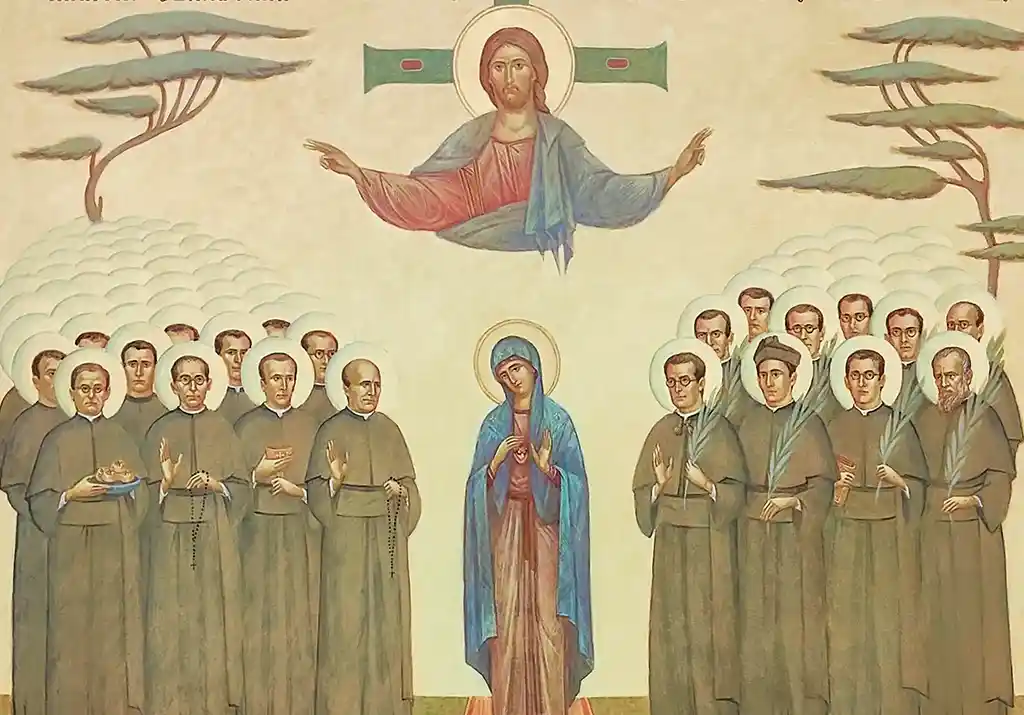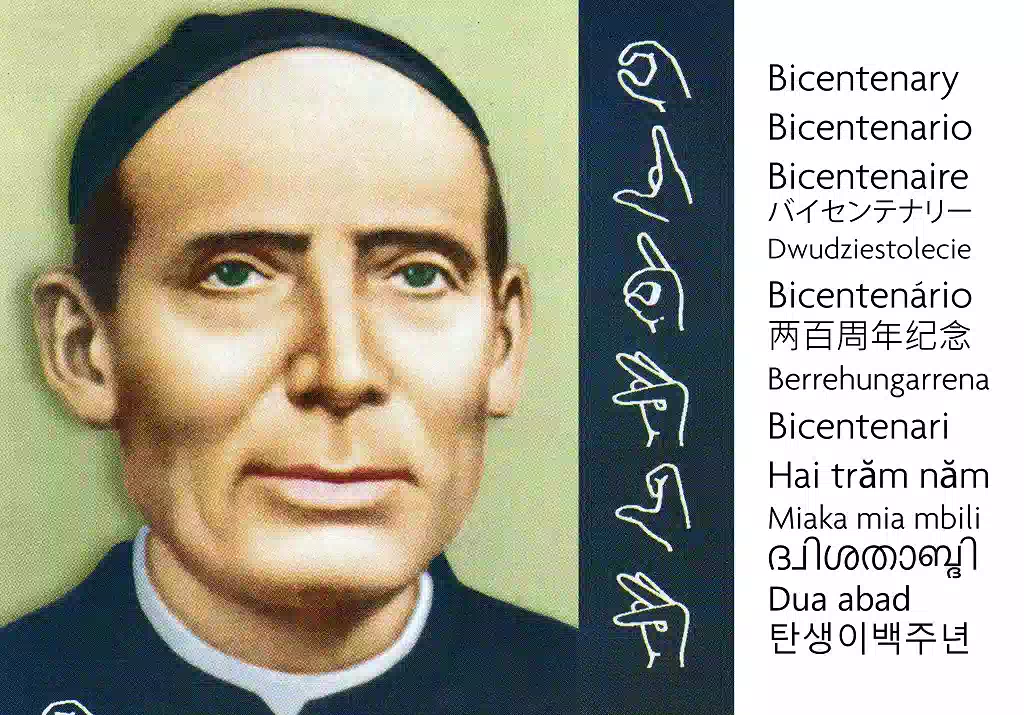Created under the title “Exaltaiton of the Holy Cross and Francis of Assisi”, by an Ecclesiastical decree (resolution) of the 14th of September 1952, the parish is situated in the locality of Jacobocci, Province of Rio Negro, Argentina. It belongs to the diocese of Carlos de Bariloche, whose Bishope is Juan José Chaparro, cmf.
Presently, it encompasses some 33,000 km2. Apart from the cities with the greatest number of inhabitants (Ingeniero Jacobacci and Maquinchao), there exists 22 small communities called “parajes”. Rural communities formed by 10 families, that can in some cases be up to 50 are called “paraje”.
The geographical reality of the regions is challenging: it impels one towards being missionary. The climate is hostile and with chilly winter temperatures; the region is characterized by the draught of the steppe, the intensity of the winds and the immensity of the distances. The major sources of work are trading, public employment and five open mines of diatom. Small producers of goats, flocks and sheep are situated in the “parajes” who barely get by the day selling meat, leather when the opportunity presents itself. The Mapuche population is predominant: there are about 146 communities in the whole Province of Rio Negro. In this manner, our parish provides valuable service promoting and accompanying the struggle for territorial and cultural rights. Apart from the periodic visits to the “parajes” by missionary groups, the Caritas team provides help with foods, clothes and materials for betterment of life.
Other characteristics of the parajes is the presence of “puestos” in the city of Ganado, isolated from all communication and under the charge of just one person. For us, claretian missionaries, we feels we cannot be silent in the presence of robbery, stripping of possession and the businesses of those who hold power.
What is the principal problem that the project intends to tackle? To explain what classes of difficulties cause such problems.
The principal problem that the project intends to solve is the systematic violation of the rights of the people of Mapuche and the mother earth: stripping of territories, ideological persecution, the negation of world view and history and aggression against the environment.
One has to situate the causes of the said problem in the capitalist system, extensively denounced by Pope Francis in “Laudato Sí”. At the local level, we find – the advancement of an economic model which intends to advance with extractive industries in this territory and for that reason, needs to weaken the forces of resistance and the life that the people of mapuche have – as a reason.
What general objectives does the project intend to achieve? What are the specific objectives does it intend to achieve?
The General Objetive of the project is to strengthen the work of the JPIC team of the “Exaltation of the Holy Cross” parish in the service of promotion of the mapuche culture and the care of the Common Home (Laudato Sí) in unity with the rights of the peoples and the options of the Claretian Congregation.
The specific objectives are:
- To form promoters of social rights with regard to the problems that the people of mapucho suffer
- To concretize accompaniment and legal access to the communities of mapuche
- To know and to appropriate to them the “mapuzungun”, world view and the history of mapuche in order to facilitate the self-determination of their identity
- To listen to the cry of the mother Earth, defending and caring for the Common Home according to the recommendations of Laudato Sí of Pope Francis
- To continue recuperating ancestral knowledge of the people of Mapuche through culture
- To offer alternatives for strengthening incomes for impoverished families
LITURGY
Memory that heals and dignifies
Reading: Revelation 22: 1-5.
Then the angel showed me the river of life, rising from the throne of God and of the Lamb and flowing crystal-clear. Down the middle of the city street, on either bank of the river were the trees of life, which bear twelve crops of fruit in a year, one in each month, and the leaves of which are the cure for the nations.
The curse of destruction will be abolished. The throne of God and of the Lamb will be in the city; his servants will worship him, they will see him face to face, and his name will be written on their foreheads. And night will be abolished; they will not need lamplight or sunlight, because the Lord God will be shining on them. They will reign for ever and ever.
A memory that heals
We are facing an apocalyptic vision, the vision of the new City, where everything is regenerated. It resounds the great consolation of God to his people and the desire to “make all things new” (Rev. 21:4-5). In this vision there is a river of water of life that comes from the generosity of God and in its path there are trees that fructify to feed and that donate their leaves to cure the people.
The river of water of life is a deeply natural image, because water is the vital element par excellence. The reference is to the prophecy of Ezekiel (47:12), but it also makes us discover the generosity of God who regenerates, nourishes, waters and prepares the earth to bear its fruit (Ps 65:10-11). In this religious reading, the goodness of God is present, but being an apocalyptic text we cannot leave aside the daily and historical element, because the greatest opposition to generosity is selfishness, and to be more concrete, the selfishness of some few who demonstrate their power by depriving a majority of what is vital. Southern Argentina knows about this, knows the pain of not being able to enjoy the water of life, crystal clear, because the progress of mining has privatized, closed, contaminated the vital source. There is pain, there is thirst, there are signs of death.
Another image that appears in this passage is the trees that fructify. They are a consequence of this river of divine generosity. A clear allusion to paradise. Trees at the same time are an allegory of diversity, because not all are the same, not all give the same fruits, they do not have the same shape, they may even have a different rhythm of growth … but they are united by the source: the same river of life. We may think that this is an invitation to look at the diversity that is at stake for the care of the common home. It is an invitation to the ecumenical and transcultural encounter that enables a “dialogue among themselves for the sake of protecting nature, defending the poor, and building networks of respect and fraternity” (LS 201). As Claretians we are called to “do with others” what is best for the good of the People of God, so that “all may have life” (John 10:10).
The trees also have a genealogical function, a reference to the past and the future, to the seed that was, to the tree that is and to the fruit that will be. The third image brings us closer to a part of the tree, to the leaves that cure people. Being the tree a metaphor of the memory, it is in the history of life where the remedy is offered to the present that wants to continue bearing fruit. The conservation of memory is a continuous provocation to active identity. We are what we are, thanks to what we were, to which others transmitted us. The peoples heal their present with the teaching of elders who “dream dreams” and allow young people to make prophecy possible (Joel 3:1).
This apocalyptic text puts us in front of the desire that rivers of life continue existing, so that the trees bear fruit and cure the people. It is the desire that the generosity of God is not hindered by the selfishness of a few, and that is why we are summoned and provoked to a culture of encounter that conserves active memory to heal wounds and continue to produce fruit where we have to be. The Mapuche people invite us to see that the common house claims this precious gift of God that “gave the earth to the whole human race for the sustenance of all its members, without excluding or favouring anyone”.” (LS 93). For our Claretian mission it is a call not to disappoint the divine will, favouring the historical dignity of the peoples of the earth where “the human being is the Earth that walks, that feels, that thinks and that loves” as the Argentine poet Atahualpa Yupanqui would say.
Intercessory Prayers:
As a community of life that lives its pilgrimage on earth, let us pray: “Renew in us your presence, Lord“.
+ That we can give credible signs for the care of the Creation, always keeping in mind the call of the weakest in our options and actions. Let us pray.
+ For our Claretian community that walks in the south of Argentina with the Mapuche people, so that the dialogue of life enables justice and peace. Let us pray.
+ That from our charism we may deepen in the ancestral cultures that defend life and that are calling us to a conversion towards God and others. Let us pray.
Let’s Pray
God of our fathers and mothers, who accompany the journey of our peoples, we ask that a new creation may be possible, where we can enjoy your presence in the dignity of your children, united in a land fertilized by your Spirit. We ask this through Jesus Christ, Lord of history who lives between us. Amen.









